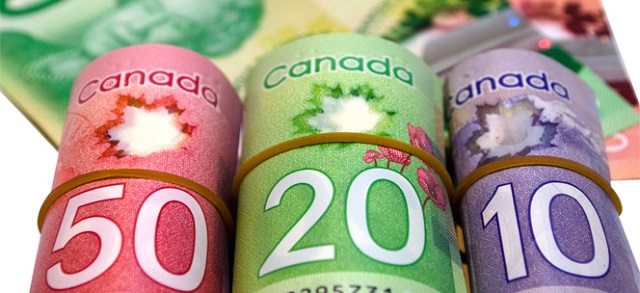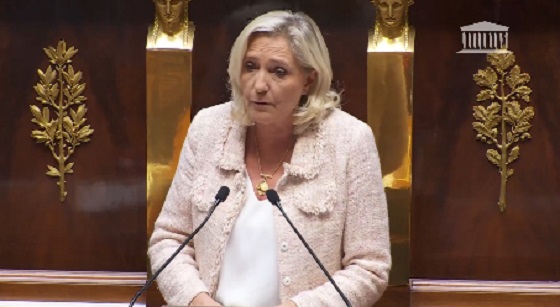Business
Carbon tax costs Canadian economy $12 billion this year

From the Canadian Taxpayers Federation
Author: Franco Terrazzano
The Canadian Taxpayers Federation estimates the carbon tax will cost the Canadian economy $12 billion in 2024, based on data published by Environment and Climate Change Canada.
“The government’s own data shows the carbon tax costs our economy billions of dollars every year,” said Franco Terrazzano, CTF Federal Director. “Prime Minister Justin Trudeau should immediately make life more affordable and help the economy by scrapping his carbon tax.”
The government of Canada released data modelling the economic cost of the carbon tax between 2018 and 2030. Based on this data, the CTF estimates the carbon tax will cost the Canadian economy $12 billion in 2024, or an estimated $295 per person.
In 2030, the carbon tax will cost the Canadian economy $30 billion, or an estimated $678 per person based on Statistics Canada population projections.
The economic cost is the difference between what GDP would be without the carbon tax minus the projected GDP with the carbon tax.
The table at the end of this news release breaks down the economic cost to each province and territory and the economic cost per person this year.
“The carbon tax costs Canadians big time for gas, home heating bills and everything else,” Terrazzano said. “And the carbon tax is a huge drag on the Canadian economy that we just can’t afford.”
Economic cost of carbon tax (2023 $)
| Region | Economic cost 2024 | Per person economic cost |
| Canada |
$11.9 billion |
$295 |
| British Columbia |
$1.7 billion |
$311 |
| Alberta |
$1.8 billion |
$372 |
| Saskatchewan |
$476 million |
$390 |
| Manitoba |
$216 million |
$150 |
| Ontario |
$4.1 billion |
$258 |
| Quebec |
$3.2 billion |
$361 |
| New Brunswick |
$137 million |
$169 |
| Nova Scotia |
$103 million |
$99 |
| Prince Edward Island |
$22 million |
$122 |
| Newfoundland and Labrador |
$143 million |
$274 |
| Northwest Territories |
-$15 million |
-$324 |
| Yukon |
$6 million |
$136 |
| Nunavut |
$14 million |
$352 |
Note: A negative figure represents an economic benefit.
Business
It’s time to finally free the beer

This article supplied by Troy Media.
 By Samantha Dagres and Alessia Iafano
By Samantha Dagres and Alessia Iafano
Canada’s booze trade is a protectionist mess.
Have you ever stopped to wonder who decides what beers you’re allowed to buy? Probably not. But every time you wander into a beer store you’re browsing a lineup handpicked not just by brewers, but by bureaucrats. Your choices are less about your taste and more about politics.
Sure, you’ll find Ontario staples like Mill Street. But if you’ve got a taste for an award-winning B.C. wine, a Quebec microbrew or a small-batch rye from Saskatchewan, prepare for disappointment. Welcome to the great Canadian alcohol paradox: it’s easier to buy French wine than a bottle of craft gin from the next province over.
This absurdity gave rise to the “free the beer” movement: an effort to let Canadian alcohol flow across provincial borders like, well, an actual country. The issue hit the headlines a few years back when Gérard Comeau of New Brunswick had the gall to go on a beer run to Quebec. Instead of paying a nearly $300 fine for that cross-border booze crime, he lawyered up and took the fight to the Supreme Court. Spoiler alert: he lost. The court ruled that there’s no constitutional right to free trade within Canada. Yes, you read that correctly.
Still, Comeau’s case lit a fire under the debate. Losing the battle doesn’t always mean losing the war. Since then, there’s been modest movement toward sanity. Ottawa even announced it wanted to liberalize domestic alcohol trade earlier this year. One problem: it can’t. Canada’s Constitution gives provinces—not the federal government—control over alcohol sales. And many provinces are still clinging to their liquor fiefdoms.
To be fair, a few have started to uncork their markets. Manitoba lets you order from out-of province businesses. B.C., Alberta, Saskatchewan and Nova Scotia have partially openmarkets. The rest—including Ontario—are still stuck in prohibition-era thinking.
Want to know how much Ontario’s LCBO monopoly costs you? Check your next receipt. Then subtract about one-third of the pre-tax price: that’s the LCBO’s average markup. While grocery stores survive on razor-thin margins, the government liquor store is pouring itself a nice fat profit at your expense. But it’s not just your wallet that suffers. That monopoly also limits your choices. In Ontario it’s easier to get wine from Spain than from Quebec. Welcome to Canada.
Yes, there’s been some progress. Ontario has cracked open the door to reform with recent steps to expand direct-to-consumer sales. And now, it’s making noise about taking the lead on building a national framework that would finally let Canadians buy booze from across provincial borders without jumping through flaming hoops.
Earlier this year, Ontario signed memoranda of understanding with B.C., Alberta, Manitoba, Saskatchewan, New Brunswick, P.E.I. and Nova Scotia—agreements aimed at reducing trade barriers and building bilateral deals. Several other provinces have done the same.
The goal? A pan-Canadian framework to allow direct-to-consumer alcohol sales, where producers can ship across the country and consumers can buy what they actually want.
As of 2024, the domestic alcohol market was worth $15.5 billion for Canadian-made products—or $26.2 billion when you include imports. It’s not just common sense—it’s good economics. Smaller producers in particular stand to gain. In fact, 76 per cent of Canadian wineries say direct-to-consumer sales would increase their revenue in the next year.
And for consumers? Better access, better variety and—brace yourself—possibly lower prices.
The first framework agreement was promised with Manitoba by the end of June. That deadline has come and gone Still, for those who’ve been fighting to pry Canada’s alcohol trade from the grip of protectionism and provincial monopolies, the finish line is at least on the horizon. If Premier Doug Ford wants to live up to his “open for business” motto, now’s the time. Honour the commitments. Finish the job. Then maybe—just maybe—Canadians will finally be able to toast with a beer from another province without breaking the law.
Samantha Dagres is the communications manager and Alessia Iafano is a research intern at the Montreal Economic Institute, a think tank with offices in Montreal, Ottawa and Calgary.
Troy Media empowers Canadian community news outlets by providing independent, insightful analysis and commentary. Our mission is to support local media in helping Canadians stay informed and engaged by delivering reliable content that strengthens community connections and deepens understanding across the country.
Business
Upcoming federal budget likely to increase—not reduce—policy uncertainty

From the Fraser Institute
By Tegan Hill and Grady Munro
The government is opening the door to cronyism, favouritism and potentially outright corruption
In the midst of budget consultations, the Carney government hopes its upcoming fall budget will provide “certainty” to investors. While Canada desperately needs to attract more investment, the government’s plan thus far may actually make Canada less attractive to investors.
Canada faces serious economic challenges. In recent years, the economy (measured on an inflation-adjusted per-person basis) has grown at its slowest rate since the Great Depression. And living standards have hardly improved over the last decade.
At the heart of this economic stagnation is a collapse in business investment, which is necessary to equip Canadian workers with the tools and technology to produce more and provide higher quality goods and services. Indeed, from 2014 to 2022, inflation-adjusted business investment (excluding residential construction) per worker in Canada declined (on average) by 2.3 per cent annually. For perspective, business investment per worker increased (on average) by 2.8 per cent annually from 2000 to 2014.
While there are many factors that contribute to this decline, uncertainty around government policy and regulation is certainly one. For example, investors surveyed in both the mining and energy sectors consistently highlight policy and regulatory uncertainty as a key factor that deters investment. And investors indicate that uncertainty on regulations is higher in Canadian provinces than in U.S. states, which can lead to future declines in economic growth and employment. Given this, the Carney government is right to try and provide greater certainty for investors.
But the upcoming federal budget will likely do the exact opposite.
According to Liberal MPs involved in the budget consultation process, the budget will expand on themes laid out in the recently-passed Building Canada Act (a.k.a. Bill C-5), while also putting new rules into place that signal where the government wants investment to be focused.
This is the wrong approach. Bill C-5 is intended to help improve regulatory certainty by speeding up the approval process for projects that cabinet deems to be in the “national interest” while also allowing cabinet to override existing laws, regulations and guidelines to facilitate such projects. In other words, the legislation gives cabinet the power to pick winners and losers based on vague criteria and priorities rather than reducing the regulatory burden for all businesses.
Put simply, the government is opening the door to cronyism, favouritism and potentially outright corruption. This won’t improve certainty; it will instead introduce further ambiguity into the system and make Canada even less attractive to investment.
In addition to the regulatory side, the budget will likely deter investment by projecting massive deficits in the coming years and adding considerably to federal debt. In fact, based on the government’s election platform, the government planned to run deficits totalling $224.8 billion over the next four years—and that’s before the government pledged tens of billions more in additional defence spending.
A growing debt burden can deter investment in two ways. First, when governments run deficits they increase demand for borrowing by competing with the private sector for resources. This can raise interest rates for the government and private sector alike, which lowers the amount of private investment into the economy. Second, a rising debt burden raises the risk that governments will need to increase taxes in the future to pay off debt or finance their growing interest payments. The threat of higher taxes, which would reduce returns on investment, can deter businesses from investing in Canada today.
Much is riding on the Carney government’s upcoming budget, which will set the tone for federal policy over the coming years. To attract greater investment and help address Canada’s economic challenges, the government should provide greater certainty for businesses. That means reining in spending, massive deficits and reducing the regulatory burden for all businesses—not more of the same.
-

 espionage1 day ago
espionage1 day agoInside Xi’s Fifth Column: How Beijing Uses Gangsters to Wage Political Warfare in Taiwan — and the West
-

 Daily Caller2 days ago
Daily Caller2 days ago‘You Have No Idea What You Have Unleashed’: Erika Kirk Addresses Supporters For First Time Since Kirk’s Assassination
-

 Censorship Industrial Complex24 hours ago
Censorship Industrial Complex24 hours agoDecision expected soon in case that challenges Alberta’s “safe spaces” law
-

 Crime2 days ago
Crime2 days agoFormer NYPD Inspector Shares What Family Of Alleged Charlie Kirk Assassin Feared Before Turning Him In
-

 COVID-1917 hours ago
COVID-1917 hours agoWhy FDA Was Right To Say No To COVID-19 Vaccines For Healthy Kids
-

 Energy17 hours ago
Energy17 hours agoTrump Admin Torpedoing Biden’s Oil And Gas Crackdown
-

 Education1 day ago
Education1 day agoOur kids are struggling to read. Phonics is the easy fix
-

 International1 day ago
International1 day agoBrazil sentences former President Bolsonaro to 27 years behind bars








